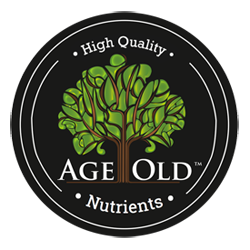Thoughtful Soil Management Practices
So, here’s the scenario. It’s over half way through the growing season and you’re looking over your garden with the pride and adoration that comes from all the hard work you put into it. You lovingly and painstakingly planned and planted, then lovingly and painstakingly pulled weeds with an aching back. After all that hard work, your eyes settle on the bell pepper near the back of the garden. It’s produced next to nothing and has only a few flowers in bloom.With a slight feeling of defeat, you decide to go to your local garden supply center and purchase a liquid nutrient supplement that is high in phosphorus and low in nitrogen. You return home, use the fertilizer according to the application rates listed on the bottle and then you declare victory! But is it truly a victory? Or is it just compensating for something that your soil is lacking?
By using thoughtful soil management practices, a gardener can greatly reduce the need for supplemental nutrient assistance in a safe and natural way. It is common knowledge that liquid nutrient applications, though fast acting, can have unintended and relatively unseen ill effects on the soil. Liquid fertilizers can leave behind small amounts of nutrients and elements in the soil that cannot be absorbed by the plants. Through time, these elements can build up and destroy the bacterial/microbial balance of the soil. They can also leach down through the topsoil and into our ground water causing higher levels of heavy metals. However, all of this can be avoided by creating a nutrient and microbial rich soil that can support the plant through all stages of its life. By adding various amendments (many of which are organic), you can help preserve the natural health of your soil while, at the same time, increasing your yields.
Before I do a rundown of different soil amendments, I must clarify something first. Soil amendments are usually added for 1 of 2 reasons.
- To improve the ‘tilth’ (drainage, consistency, etc…).
- For fertilization.
Sometimes applying a material intended to improve ‘tilth’ can affect fertilization and vice versa. For this essay, I want to focus on the amendments that improve the fertility of the soil.
Earthworm Castings
They are quite possibly the best organic soil amendment available today. Castings are a microbial rich and naturally fine form of humus, which is always a part of good soils. Humus is organic matter that has been broken down molecularly, making the nutrients readily available to the plants roots. In this case, items, like grass clippings and food waste, move through the worm’s digestive system and are broken down. Most earthworm castings have an NPK of 1-0-0 and many have small amounts of calcium and magnesium along with other trace elements.
However, what makes earthworm casting stand out is the fact that the form the nutrients are in is one that is easily up taken by the plant. In turn, this makes the fertilizer longer lasting with less waste because the plant will only use it when it is needed. Another benefit of using earthworm casting is there are almost always tiny baby worms, which are nearly invisible contained in it. The worms will grow up in your soil and continue working long after your initial application.
Kelp Meal
Kelp meal is a dried seaweed product that is rich in minerals and essential nutrients. Most kelp meal is harvested from the cold waters of the North Atlantic and is organic as well as renewable. Kelp meal also acts as an excellent bio-activator. So, when it is added to the soil, it will help to break down other organic materials quickly and then the nutrients they posses can be easily utilized by the plant. Many people add kelp meal to their home compost piles to assist in the decomposition of grass clippings, leaves and kitchen waste.
Bone Meal
As the name implies, bone meal is made from the bones of many different kinds of animals. The bones are ground up, steamed at high heat and dried. Now, that’s what I call using the whole animal! Once again, the importance of a humus, rich soil comes into play. The bone meal is broken down on a molecular level by the bacteria in the humus. Bone meal is an excellent source of organic calcium and phosphorus, which will encourage more blooms and better fruit set. It has also been found to help mend soils with heavy metal contamination (Mark Hodson & Eva Valsami – Jones 1999).
Compost
Compost works wonders to rejuvenate your soil and give it new life. Good compost is rich in beneficial micro organisms that work to break down organic materials in the soil. When the organic material breaks down completely, it becomes humus, which is great for fertility and the suppression of disease in the soil. There are many different kinds of compost and some can be made at home. Types of compost that can be made at home include: manure, mushroom, leaf and lawn clippings. It can even be made with the fruit and vegetable scraps from your kitchen. Different types of composts can be mixed together, and mixed with other soil amendments, without worry.


